The Best eMTB of 2025
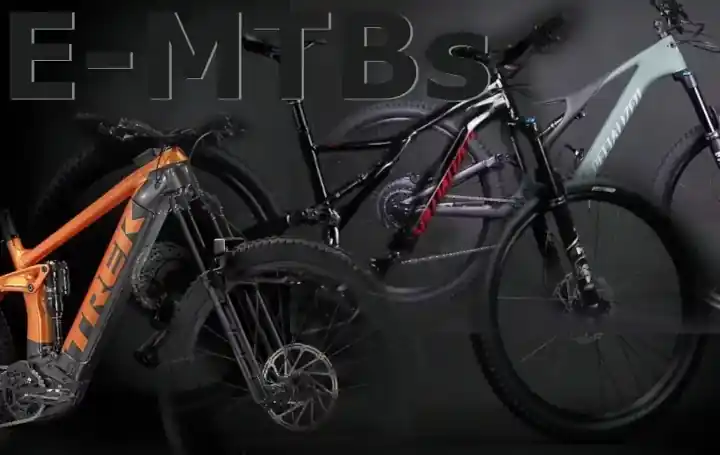
We are witnessing a surge of innovation and competition in electric mountain bike technology. Manufacturers are honing performance, developing state-of-the-art components, intelligent software, and lightweight materials to define the next generation of e-MTBs.
This article compares the main contenders vying for the title of “The Best Electric Mountain Bike of 2025.” I review the pro’s and cons of the eBikes, ask experts for their insights, and relay user feedback on the ride characteristics and the riding experiences they provide.
Whether you’re a seasoned trail enthusiast or a newcomer to the world of off-road cycling, the future of mountain biking is here, and it’s electric.
Key Features to determining the best e-MTB are:
Advanced Motor Characteristics
The heart and soul of every electric mountain bike is its propulsion unit. The top e-MTBs of 2025 must pushing the boundaries when it comes to performance and efficiency. Superior motor performance is key to the analysis.
Smart Connectivity
The integration of technology is revolutionizing riding experience. With ride modes and app connectivity, bikes are smarter than ever. They are a motivation tool to push your cardio and also trustworthy companions to make sure that you don’t burn through your battery ‘juice’ during your trail adventures.
Battery Life
Worries about running out of power on your rides are becoming a thing of the past as battery technology advancements increase the range that can be achieved on a single charge. The best e-MTBs in 2025 are setting benchmarks for endurance, empowering riders to explore the most challenging trails without experiencing range anxiety.
Lightweight Design
Manufacturers are dedicated to reducing weight without compromising durability. Carbon fiber frames and state of the art materials are becoming mainstream to ensure a nimble ride.
Adaptive Suspension Systems
The best e-MTBs require a suspension system that’s responsive and adaptable. The latest e-MTBs come equipped with cutting edge suspension technology that automatically adapts to riding conditions.
Price
The bad news is that electric mountain bikes continue to see a spike in price. Over the past year performance brand name full suspension e-mountain bikes are typically starting around $8,000.
The majority of e-bikes are manufactured in China or Europe. The few US centric factories that do manufacture electric bikes, are heavily reliant on global suppliers. electric engines, tyres, wheels, chains, brakes, and even frames are often sourced from overseas.
The reality is that Trump import tariffs will add to the price of all electric bikes once current stock has been exhausted. We anticipate a sharp increase in price of at least 25% on most models (as tariffs stand as of June 2025).

How The eBike Mountain Bike Review Was Performed
To start on a positive note, all e-MTB riders I spoke to told us that all brand-name e-bikes are good these days. So, whatever e-bike you buy, Canyon, Cannondale, Yamaha, Giant, Trek, Specialized, Avanti, or other brand name vendors, you will not be disappointed.
Electric mountain biking is gaining in popularity and big names are abound. Porsche, BMW, Jeep, and even Valentino Rossi, are high quality, reputable names that are producing sensational e-MTBs.
Every enthusiasts that I spoke to all thought that the selection of ebikes from Specialized were good value, high performance bikes. They provides a great range of e-MTBs from entry-level US$8,000 past US$20,000.
In order to keep things simple, I cover the features and benefits of 4 e-bikes from the Specialized brand: Entry-level, lower mid-range, upper mid-range, and top end. We then pitch these against Trek and Cannonvale e-bikes in the same price bracket to explain the benefits or drawbacks of alternative brands.
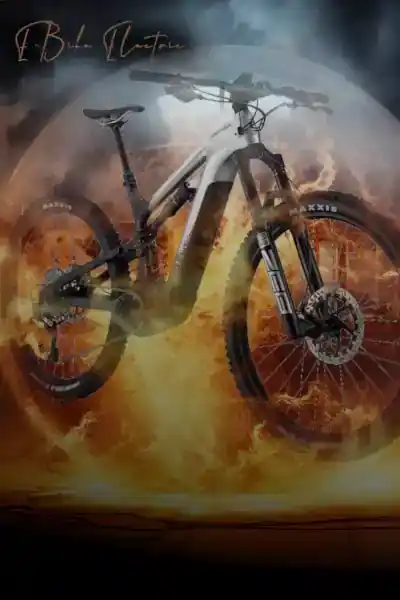
The best electric mountain bike choice resulted from an intensive process:
- I began by consulting a number of e-MTB enthusiasts for their take on which bikes they would buy.
- Next, I began in-depth conversations with specialist e-MTB retailers to obtain their perspective on the gadgets, strong points, and weak points of each bike. This helped to fill in the details of what “bells and whistles” become available as you climb the price ladder.
- Researching electric bike mountain bike user polls established what the broader market thought was the best e-MTB brand.
- We examined alternative brand name manufacturers including “Trek” and Cannondale to establish what you get for your money and where the best value lies.
- Finally, research established that Specialized are renowned as technology leaders in the industry and have won numerous international awards for their e-MTBs.
Battery capacity
There is always a trade off with electric bike mountain bike motors. The more power they provide, the greater the assistance provided to the rider. The extra power comes at a cost.
Larger batteries assist the rider tackle steep inclines and longer rides but require heavier, bulkier batteries. Heavier batteries make e-MTBs heavy footed while lighter batteries means that the motors provide less power, or travel a shorter distance.
Alternatively, heavier battery make for a less nimble ride experience.
All brand name electric bike mountain bikes that we tested used either 500 wH Li-ion batteries for lower priced models or 700 wh batteries for their mid and top price range models. Top models are offering battery capacity of up to 850 wH. To compare apples with apples, we compared 500 wH and 700 wH batteries.
None of the battery packs were obtrusive or weighty, and there was a negligible weight difference between the small, less powerful batteries and the larger 700 wh counterparts.
We note here that a larger capacity battery does not increase engine power. The benefit of a battery with 40% more capacity is that (in theory) you should get 40% further on the larger battery.
Li-ion is a proven battery technology that has been popular for more than 15 years. The integrity of the battery cells and the management circuits are good. Li-ion batteries are the most durable and reliable for the weight and price. Although batteries will reduce in capacity the more they are used, Li-ion batteries usually provide acceptable travel distance for 2 to 3 years.
Replacement Batteries
This brings me to my next point which is that e-bike buyers should consider the cost of a replacement battery pack when purchasing their bike as this can be a significant cost of replacement.
We have found over the years that few manufacturers have supported their products well. Advancing e-MTB styling has meant that batteries are specific to the bicycle model and often cannot be obtained for e-bikes even just after a year or two old. When your battery dies, you often have to seek out a battery builder to rebuild the pack for you.
Most European name brands are required to support their product for at least 7 years. This provides some assurance that your investment is not lost when the battery is dead.
We attempted to obtain prices for replacement batteries, however, most manufacturers refuse to provide this information. Producers will change or repair batteries under warranty but you have to specify your battery serial number before companies will provide a price of replacement.
We were able to obtain replacement battery prices for Specialized bikes who were open about their replacement prices. We anticipate that replacement batteries for Specialized brand e-MTBs are lower cost than their competitors.
Replacement batteries from Specialized are US$950 for a 500Wh battery and US$1400 for a 700Wh battery.

Weight distribution
The combination of a low, mid-mounted battery and the mid-drive electric motor provides great balance for the bike, and minimizes the impact of battery and motor weight. Weight distribution is significant for off-road use as you need a well-balanced bike for rock hopping and improved traction on dirt track turns.
All brand-name e-MTB’s are well balanced with the battery pack positioned low into the front down-pipe of the frame. Similarly, all e-bikes used mid-drive motors which sit between the pedals of the mountain bike and drive the rear wheel through the chain of the bike. This format is now the industry standard amongst all brand names.
There are some minor differences between brands, however, weight distribution and bike geometry are very subjective and very with riding styles.
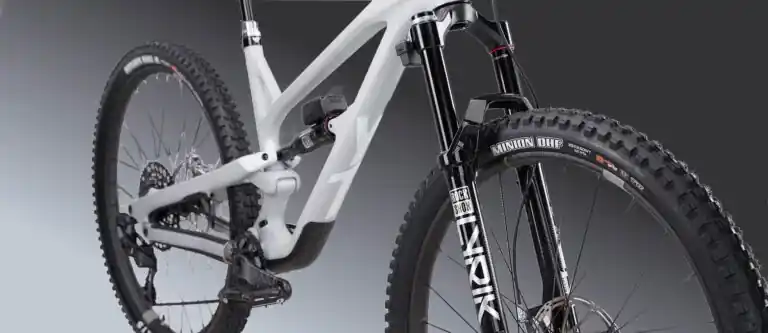
Smartphone electric bike controller – Ride management
Specialized mountain bikes have a good, user adjustable ride management system. Their Turbo range of e mtbs use bluetooth to interact with their user friendly interactive smartphone app. We did, however, prefer the Bosch smartphone app which is available on Trek e-MTBs.
The Bosch system integrated with more devices connecting with navigation maps, heart monitors, and even weather forecasts.
The core function of App management software is to allow the rider to select the best power assistance for the expected length of each journey. The rider can select from a number of options to maximize the power that the ebike motor will provide during the ride.
Smartphone apps allow you to record information about your rides and adjust your e-mtb settings to better suit your goals. For example, the e-bike can be adjusted to increase power assistance or to improve ride distance. This allows the battery to be conserved by providing less assistance for long duration rides while providing maximum power in short bursts on the toughest parts of the ride.
In addition, the “Mission Control” app from Specialized records ride data and motor diagnostics.
Warranty
Brand manufacturers all provide an industry-standard warranty of 2 years on motor and 2 years on a battery. Specialized are a little ahead of the pack offering 4 years on the motor (double the industry standard) with the standard 2 years on a battery. TREK are poor performers in battery support providing a minimal 30 day guarantee.
Specialized e-mountain bikes
In this review, we first compare the features and benefits of 3 Specialized e-MTBs to provide a baseline. Using this baseline, we can compare these Specialized models with similarly priced e-bikes from other manufacturers.
From lowest to highest price we look at:
1) Turbo Levo Comp Alloy US$ 10,900
2) Turbo expert US$ 15,000
3) S-Works Turbo Levo SL US$22,500

Turbo Levo Competition
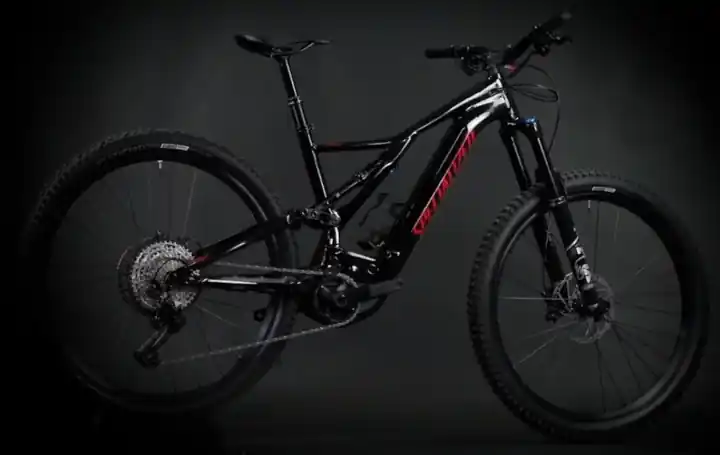
Top brand manufacturers pitch their full blooded, out and out, performance bikes around US$10,900. The Specialized Turbo Competition fits perfectly into this price bracket at just under $6K.
E-MTBs at this price provide every tool that a top rider would need to win a UCI electric bike mountain bike world championship race. Models in this price range provide full suspension e-MTBs capable of winning top level events.
Of course, there are benefits to more expensive models but the Turbo Competition e-MTB is very capable.
This e-MTB has focus on lightness. The new aluminum alloy frame has been redesigned motor mounts to shave off a few grams.
The 2025 models switch the front RockShoxs for Fox 36 floating axle front suspension. The air damped suspension lacks the performance of oil damping but saves a little weight. The front damping uses high speed compression circuits. In layman’s terms, this means it has “trick” damping to absorb small, rapid bounces while still allowing long travel to cushion the big hits without bottoming out.
The Turbo Competition has a 500Wh battery.
The brakes are again, 4 piston front, but up-rated from the hardtail with a 4 piston rear. Both front and rear discs are 8” (200mm) rotors. Brakes provide enough stopping power for any situation.
The e-MTB tips the scales at 51lbs (that’s a fraction over 23Kg) for the full adult spec frame.
A fraction under US$10,900 retail, this bike is a real competition bike. The bike has the same top 250w motor as more expensive models (producing an industry leading 90Nm of torque) but uses the lower rated 500wH rated battery to lighten the weight. The engine has a clutch release above 25MPH to stop the electric motor from holding the rider back at high speeds.
The areas that the Levo Turbo Competition misses out on are:
- Damping front and rear. The Turbo Competition model has adequate damping, however, it relies on air rather than fluid damping of more expensive models.
- Front and fork travel has 150mm travel from Fox 36mm front stanchions. Rear Fox Float suspension provides 150mm of travel. These shocks are good but are not as stiff as higher spec models which are more planted on fast, bumpy, downhill tracks. The forks are great for uphill sections, slower trails and light riders.
- Additional fork length causes more flex. For aggressive or heavy riders, thicker forks are required to allow the shocks to travel further.
- 500Wh capacity battery is less capable than the 700Wh batteries of higher price models.
Turbo Levo Expert
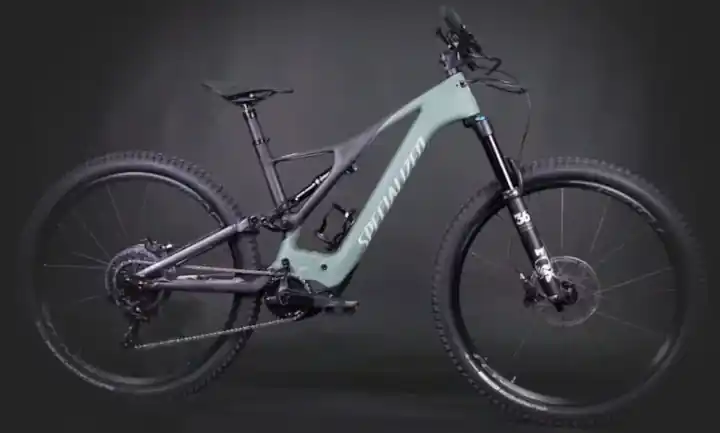
The Specialized Turbo Expert retails at $11,500. The rule of diminishing returns applies here. As the purchase price increases, the benefits obtained for your dollar decrease.
The best analogy here is formula 1 racing. How much do you think an F1 team would pay to gain 1/4 second per lap? Electric bike mountain bike technology is the same. There are benefits for the extra money but the differences are subtle rather than dramatic.
The core of the Turbo Expert electric mountain bike uses the same technology. The motor is identical to the Turbo Competition e-MTB. Improvements are found in all components – Cassettes, derailleurs, grips, bearings and tires. Uprated parts add to the quality feel of the bike and the electric SRAM shifter system delivers precise gear changes.
The greatest improvements, however, come from the stiffer, lighter alloy / carbon fibre frame and improved battery.
The frame provides a more aggressive stance (lower center of gravity and shorter wheelbase). This makes the bike more agile, more stable, and better for downhill runs while requiring a fraction more effort to ride.
The air damped front forks are again Fox 36 identical to the Turbo Competition. The rear again uses Fox float DPS 150mm.
Race organisers are adopting 700wH batteries as the maximum allowed battery storage. Needless to say that the 2025 model Turbo Expert sports a 700wH battery.
The e-MTB weighs 48lbs (that’s 3 lbs lighter than the Turbo Comp or just under 22Kg) for the 29″ spec bike.
S-Works Turbo Levo SL
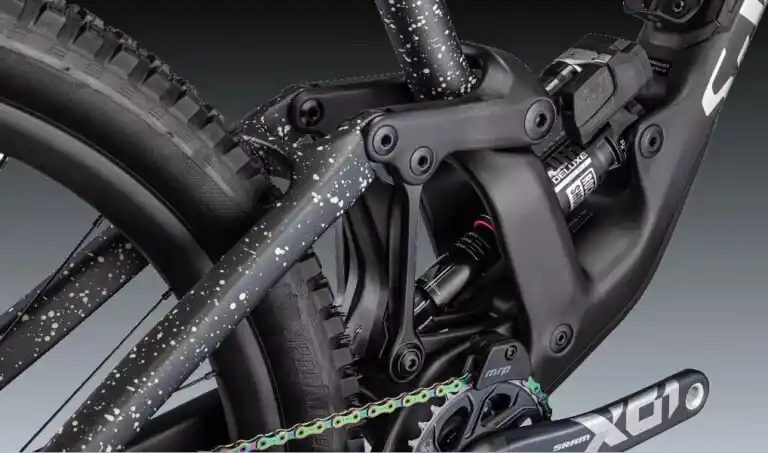
The S-Works Turbo SL is a super lightweight e-MTB with a few compromises to save weight. There are more expensive models which offer greater motor assistance and larger battery although the reduced weight, Carbon fibre frame and incredible suspension provide capable riders the ultimate tool.
This incredibly light e-MTB weighs 38lbs ( just over 17Kg) for the 2025 model 27.5” spec bike. This is the lightest e-MTB on the market and the performance shows.
Apart from the unbeatable weight advantage, this electric bike has the best of everything from bearings, breaks, agile frame geometry, suspension and electric SRAM Eagle ASX gear shifter and electrically damped saddle post. The smaller 27.5” rear wheel sharpens up the back end making it lighter and easier to control.
The bike is great to ride as it comes but offers changeable steering head angles and chain stay length for sharper ride to suit the individual. As with all the Specialized e-MTBs, the bike comes with a selection of frame sizes to suit tall or short riders and sharpen up the ride as required.
160mm front Fox 38 and 150 mm rear.Fox X2. The extra diameter of the Fox 38 reduces steering flex to allow more suspension travel.
The S-Works Levo SL is a bike made for elite mountain bike enthusiasts. This is the ebikes drawback as many riders snub this model for its lower power battery and motor.
The 2025 Gen 3 S-Works addresses these areas for an extra US$2,000. You gain an extra 5Kg but have the advantage of the full powered 90Nm motor and the 700Wh battery.
TREK e-MTB
Now that we have established a baseline of what to expect from Specialized, we can easily compare these bikes to the TREK range of e-bikes.
What we find is that the features of TREK e-bikes mirror the features of the equivalent price Specialized e-bike with only minor variations. If we look at the US$8,200 mountain bike, the features line up with the similar price Specialized e-bike.
Lower priced Trek e-bikes begin with a 500 wh battery, however, for a few extra dollars, their larger battery has around the same capacity at 750 wH for larger frames or 625 wH for small frame eBikes. Compared to the 700wh of the Specialized equivalent).
Though fractionally down in battery capacity and engine power, these are not noticeable when riding the TREK. The engine, in fact, provides a more natural rider interaction. The power comes in smoothly and instantly engages the pedals. TREK power plants make the Specialized bikes feel relatively clunky by comparison,
Comparing flagship models, $13,300 will buy you the Rail 9.9 Gen 4. This carbon fibre framed bike boasts a limited-edition Bosch Performance Line CXR motor developed to win races. The key difference with the race motor is that it allows the rider to use 4x boost support for longer periods.
Note that the full powered TREK models compete with the Specialized Turbo Levo where as the TREK Fuel EXE 9.9 XX models ($14,400) are pitched against the Specialized Turbo Levo SL ($20,500).
Super Light models are designed for a close to analogue MTB experience as possible with lightweight motor and battery to enhance agility. The TREK Fuel EXE 9.9 uses an extremely light (1.85Kg) TQ-HPR50 motor. The lightest in class. The motor focuses on seamless power delivery with smooth, quiet operation.
The 2025 Turbo Levo SL boasts a 33% torque upgrade will have the Gen 2, 1.2 SL Custom Rx Trail Tuned Motor. This motor matches the 50 Nm of torque on TREK Fuel eBikes.
Fuel models have reduced torque compared to the Rail, delivering up to 50 Nm of torque (compared to the 90 Nm of the Specialized motor on the regular Turbo Levo, or 85Nm of the Bosch Performance Line on TREK Rail’s.
Livery
The Trek e-MTB was, in our view, the best looking of all the e-bikes we tested. The paint quality, color choices, and use of gloss and satin finish really took the bike to the next level. The Trek livery on the frame and battery really pop and little touches (like the finish inside the battery) add quality. When you remove the battery from the frame to charge, the Trek logo is present on the inside.
The attention to detail along with the styling and paint finish that impressed us most about the Trek e-bikes. If looks are high on your list of desires then Trek e-bikes are outstanding.
Best Value e-MTB
Comparing full suspension e-MTBs price for price, we felt that the Cannondale range offered very good value at the top price level.
The Cannondale Moterra Neo 4 is their entry level e-MTB which presents fantastic value. Starting around US$ 9,000, the Cannondale provided top spec suspension with 625Wh battery. The specs on this bike are approaching those of the S-Works at the price of the Turbo Competition.
The ride is excellent with 150mm Rockshox 35 Silver R forks. The top level components use the Shimano EP8 motor and battery which we found to be smoother and less noisy than the Bose motors used on the Specialized range.
Styling on the Cannondale models was a little plain compared to the finish of Specialized or TREK. This electric bike mountain bike is built to take care of business rather than to look good.
Overall, we felt that Cannondale presented a great value option for the price and we had to give this unit a special mention.
CONCLUSION
Summary
Electric bike mountain bikes have been aggressively refined over the past 20 years, and all name brands now perform well be it a $8,000 model or a $20,000+ model.
The best performing models are full suspension mountain bikes with full powered e-bike motor and battery. It is important the weight is kept to a minimum and is distributed evenly.
E-MTBs with more powerful batteries provide more motor assistance but the additional weight makes the bike less nimble. For this reason, top performance electric mountain bikes rarely offer battery capacities above 850 wH.
If looks and quality finish are important to you then the TREK range of e-bikes have the edge as they have eye catching livery.
The price / performance of Trek bikes mirrored that of the Specialized range but we felt that the Bosch motor rattled more than the equivalent Specialized mountain bike.
Our choice of best performance for your dollar is the Cannondale Moterra Neo at the lower end of performance e-MTB pricing is similar to the Specialized Turbo Levo Comp. For top performing models, we found that the Specialized range of mountain bikes had a slight edge over their competition. We felt that Specialized e-MTBs provided a slightly better quality ride than other brands at the same price.
Within the specialized range, the individual needs to choose what standard e-MTB they can afford. All Specialized mountain bikes were good and each increment in price offered more advantages.
Our opinion was that the top performing electric bike mountain bike was the S-Works Turbo Levo SL. There are more expensive models in the Specialized range of e-MTBs, however, the features of more expensive models were nice to have or lightweight rather than full powered and functional.
Advanced features like electric saddle adjustment just seemed a little too gimmicky. Similarly, Paying more for a lightweight e-Bike is counter intuitive. If you want an electric bike, most of us want it to take the load off.
The Specialized range of e-MTBs also provided better warranty and lower cost battery replacement than the alternative brands that we investigated.
